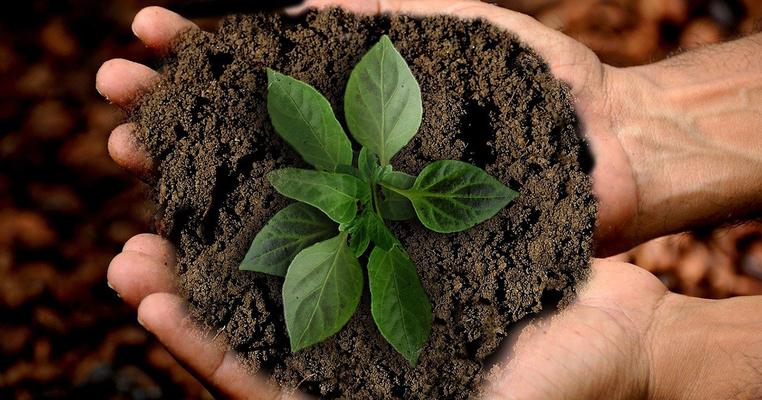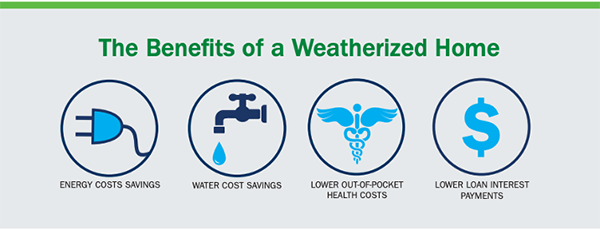
What We Want: Green Communities
For the most part, we all want the same things. Good health. Long-lasting happiness. To be treated equally and fairly. The opportunity to succeed.
And with a new president and a new Congress, we have a chance at all of it.
To think big and act boldly. To confront the climate crisis threatening our future. To get workers and families devastated by the pandemic back on their feet. To finally face the racial injustice destroying dreams and lives across the country.
All of it. But it’s not going to happen on its own.
Returning to the pre-COVID status quo is not an option either. Things weren’t exactly going great, in a million different ways, well before the pandemic upended all of our lives.
So we’re not only talking about building back – we’re talking about building back better by prioritizing climate-smart, energy efficient housing and infrastructure to ensure our communities are safe, healthy, and sustainable for the long haul.
How do we get there? The path marches straight through the establishment of better financing options for green technologies as well as further building out existing programs that already help millions of Americans to keep warm when they need it the most.
A National Green Bank
“The clean energy revolution underway now will transform the American economy and way of life. What the sector needs now is smart and flexible financing to accelerate the renewable revolution,” explained Climate Reality President and CEO Ken Berlin. “By providing capital for clean energy projects and reducing the risk of investing in clean energy technologies, green banks can help cut dangerous greenhouse gas emissions and create good middle-class jobs.”
A green bank uses public funding to invest in decarbonization, jobs, and economic growth. It is also an effective tool for mobilizing private investment, which can unlock new industries and opportunities for communities that have faced disinvestment in the past.
Sounds awesome, right?
So it should come as great news that in early February 2021, bills were re-introduced in both the Senate and the US House of Representatives that would create a national green bank – or as it’s named in the bills, the “Clean Energy and Sustainability Accelerator.”
The Accelerator works by providing loans and using the revenue from loans being paid back to make even more investments – sort of like a snowball rolling down a hill, getting bigger and bigger as it picks up more and more of the white stuff.
(Except the “white stuff” in this equation is actually green, of course. There is a great deal of money to be made – and jobs to be created – in the emerging clean energy economy.)
This is how we can achieve scale for the clean energy transition and begin tackling the climate crisis in a way that centers justice.
The Accelerator would seek to close the financing gap that exists for technologically and commercially viable emissions reductions projects by focusing on nine areas: environmental justice; support for workers transitioning to the low-carbon economy; renewable energy; building efficiency and electrification; clean transportation and charging infrastructure; grid infrastructure like storage, transmission, and microgrids; industrial decarbonization; sustainable agriculture and forestry; and climate-resilient infrastructure.
Seems like the kind of thing we should all get behind, right? And it’s not even the only thing we can do to bolster the economic recovery from the COVID-19 pandemic, assist Americans in need, and help the US meet its climate goals.
Energy Efficiency and Conservation Block Grants
Over the last few years, local leadership on the climate crisis has been essential to driving down emissions and creating green jobs – all at a time when the federal government was hostile toward climate action and communities everywhere were stretched thinner than ever.
Reauthorizing and increasing funding for the Energy Efficiency and Conservation Block Grant (EECBG) program can provide the funding local leaders need to continue and expand on the incredible work they’ve done.
EECBG was the largest nationwide direct investment in energy efficiency and renewable energy projects at the local level in US history. First authorized under the Bush Administration in the Energy Independence and Security Act of 2007 and later provided one-time funding under the Obama Administration’s American Recovery and Reinvestment Act of 2009, the EECBG program provided $3.2 billion in block grants and technical support to state, local, and tribal governments to develop energy efficiency, conservation, and renewable energy projects.
The program did a lot of good, which explains why it was also widely popular.
EECBG programs led to the creation or retention of about 62,900 job-years, or about one job per $36,000 invested. It achieved $5.2 billion in lifetime cost savings on energy bills, of which 70 percent applied to residential consumers. It helped the US avoid around $1.8 billion in social costs of carbon. It reduced emissions by about 25.7 million metric tons of carbon equivalent (the same as taking 6.6 coal-fired power plants offline for a year).
And importantly, it saved customers about $1.76 on their bills for every $1.00 invested by the program.
Here at Climate Reality, we really like saving people money on their utility bills, especially those who need it the most.
Do you like to save money on your bills while fighting climate change, too? It’s not a bad deal, right?
Well, let us tell you about the US Department of Energy’s Weatherization Assistance Program (WAP) then.
Weatherization Funding
Improving residential energy efficiency is a not-so-secret weapon in the climate fight – one that comes with incredible benefits for homeowners and renters, from lowing utility bills for all to lessening the energy burden experienced by low-income families.
Did we mention that it’s also really, really popular with most Americans?

Weatherization – both in new construction and existing building retrofits – can help mitigate the climate crisis by reducing energy and building sector emissions, and can be a tool for strengthening climate justice through social and economic benefits to low-income communities.
Enter WAP, the nation’s single largest residential whole-house energy efficiency program.
WAP has helped more than seven million families by servicing approximately 35,000 low-income households annually, supports 8,500 jobs across the US and its territories, and (again, very importantly) results in $2.53 in community benefits for every dollar invested through the program.
That’s a lot of bang for your buck. And it couldn’t come at a more important time.
According to a recent study, low-income American households typically spend a staggering 13.9 percent of their total annual income on energy costs, compared to just three percent for other households. To make up the difference, these families often sacrifice other needs like food, medicine, and childcare to pay energy bills.
Home weatherization programs like WAP provide immediate benefits to the families hit hardest by this disproportionate energy burden by lowering their energy and water costs, as well as out-of-pocket health care expenses and loan interest payments, allowing them to redistribute their resources to areas where they’ve long been forced to go without.
And once again, we’re dealing with some very across-the-board popular ideas here. Overwhelming majorities of registered voters support providing tax incentives or rebates to retrofit existing buildings (88 percent) and setting stronger energy efficiency standards for new buildings (86 percent).
What You Can Do
At the end of the day, what we’re really talking about is using the levers at our disposal to move the needle in the direction of a better tomorrow for communities everywhere, starting with those most in need of the boost.
The establishment of a national green bank would pave over the many potholes in how we fund clean energy projects and bring them to scale – making the ride into a future powered 100 percent by renewable energy far smoother.
At the same time, energy efficiency grants and weatherization programs could go a long way toward chipping away at the over 1.8 billion metric tons of carbon dioxide emissions, or about 35 percent of total energy-related emissions, in the combined US residential and commercial sectors, while offering low-income families respite from currently overwhelming energy costs.
We’re here to post wins across the board, because this is our climate moment – and we can’t afford to waste it.
Together, we can build a cleaner, greener, healthier future for communities across the country.
It starts with joining your local Climate Reality chapter.
Across the country, everyday Americans are joining Climate Reality chapters and working together for practical climate solutions in communities from sea to shining sea. These friends, neighbors, and colleagues are making a real difference for our climate when it matters – and you can too.
Join a Climate Reality chapter today and be part of the fight for a sustainable future.

